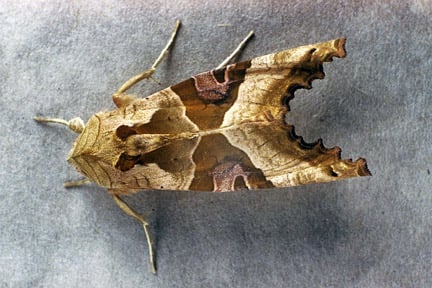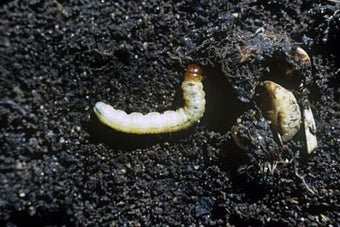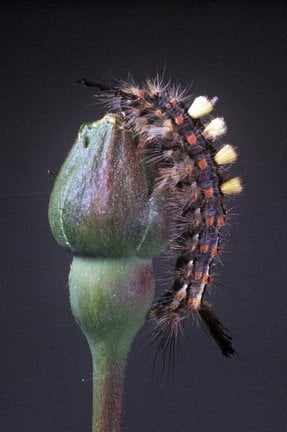
Quick facts
Common name - Angle shades
Scientific name - Phlogophora meticulosa
Plants affected - Many herbaceous and woody ornamental plants
Main symptoms - Holes in foliage and flower buds
Most active - All year
What is angle shades moth?
The angle shades is one of many species of moth that can be found in gardens. The caterpillars of this species eat the foliage and flower of a wide range of plants. The adult is has a colourful wing pattern and shape that resembles a withered autumn leaf.
Symptoms
The caterpillars of this moth can be found feeding on plants at all times of the year but are most common between May and October.
- Holes are eaten in the foliage and flowers of a wide range of plants, including unopened flower , frequent hosts include chrysanthemums , red valerian and barberry
- Young growth at the shoot tips is particularly favoured
- The caterpillars are up to 45 mm long (1¾ in) and vary in colour from brownish yellow to bright green
- They hide during the day, emerging to feed at night
Management
It is only occasionally that caterpillars of this moth cause significant damage in gardens; it can usually be tolerated. Caterpillars and associated moths are important as a food source for other garden wildlife and so should be preserved where possible.
- Where possible tolerate populations of caterpillars, as butterflies and moths are an important part of the garden ecosystem
- Encourage predators and other natural enemies in the garden such as birds , wasps , hedgehogs and ground beetles
- Check plants regularly for the presence of larvae and remove by hand where practical
- Caterpillars can be removed to alternative host plants where damage is less undesirable (e.g. common nettle, hop or bramble) or larger host plants where their feeding will have no effect on the long term health (e.g. hazel, birch or oak)
Biology
The angle shades moth usually has two generations a year but caterpillars can be present all year round. Eggs are laid on a wide range of wild and cultivated plants in late May to June and August to October. Larvae of the second generation overwinter and can feed whenever night temperatures are above 5ºC (41ºF). Once fully grown, the larvae pupate in a cocoon just under the soil.
Larval food plants include: common nettle, hop, red valerian, broad-leaved dock, bramble, hazel, birches, oak, barberry and in gardens many other plants.
It is also a migratory species, capable of flying long distances. In late summer the resident British population is supplemented with many individuals arriving from mainland Europe.










